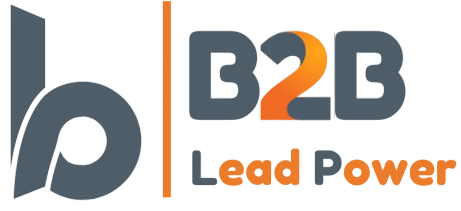Introduction to Intent-Based SEO
Intent-based SEO refers to the optimization strategies tailored to understand and leverage the intent behind a user’s search query. Unlike traditional SEO, which primarily focuses on keyword usage and ranking, intent-based SEO emphasizes comprehending the motivations and objectives of users as they interact with search engines. By analyzing search intent, businesses can create content that resonates with what prospective customers are genuinely seeking, thereby increasing their online visibility.
The significance of intent-based SEO in the digital marketing landscape cannot be overstated. As the landscape evolves, search algorithms have become increasingly adept at interpreting intent, shifting the focus toward delivering relevant content rather than just matching keywords. Understanding this concept is especially crucial for B2B lead generation, where decision-making processes involve multiple stakeholders who may have varying intents and information needs. By aligning content with these diverse intents, businesses can attract a more qualified audience, significantly enhancing their chances of converting prospects into leads.
Implementing intent-based SEO strategies involves categorizing search intents into three main types: informational, navigational, and transactional. Informational intent indicates that a user is looking for knowledge or solutions, while navigational intent suggests a desire to reach a particular website. Transactional intent, on the other hand, indicates that a user is ready to make a purchase or engage in a business decision. Each category requires a distinct approach to content creation and optimization. By effectively addressing each intention, companies can pave the way for increased visibility in search engine results, ultimately leading to improved B2B lead generation efforts.
Understanding User Intent
User intent is a critical component of search engine optimization (SEO), particularly for B2B lead generation. It refers to the underlying motivation behind a user’s search query and provides valuable insights into what information or solutions they are seeking. There are primarily four types of user intent: navigational, informational, transactional, and commercial investigation, each playing a unique role in shaping user behavior.
Navigational intent typically involves users who are seeking a specific website or brand. In this context, they might type the name of a company or product into a search engine, aiming to reach a predetermined destination. Understanding navigational intent is essential for B2B businesses that want to optimize their brand presence online; ensuring that their website is easily discoverable can lead to increased traffic from users who are already familiar with the brand.
Informational intent, on the other hand, is characterized by users seeking answers to their queries or looking for educational content. This type motivates users to gather insights or knowledge about a certain topic, which is prominent in the B2B sector where clients often require extensive information before making decisions. By producing high-quality, informative content that addresses user queries, businesses can position themselves as credible sources of information, enhancing user trust.
Transactional intent indicates users ready to make a purchase or complete a specific action, such as signing up for a service or downloading a resource. Recognizing this intent allows B2B marketers to optimize landing pages and calls-to-action effectively, ultimately guiding users through the conversion funnel.
Lastly, commercial investigation reflects users in the decision-making phase, comparing products or services before committing. By understanding this user intent, businesses can tailor their content to highlight unique selling propositions and competitive advantages, making it easier for potential clients to choose their offerings. Identifying these varying intents is not only crucial for aligning content strategy but also for significantly enhancing overall SEO effectiveness in the B2B landscape.

The Importance of Intent in B2B Markets
In the realm of B2B marketing, understanding buyer intent is crucial for effectively engaging potential leads. Businesses often face elongated sales cycles and complex decision-making processes, which differ significantly from B2C markets. In B2B environments, purchases usually involve multiple stakeholders and require a series of evaluations before a final decision can be made. Recognizing the intent behind every inquiry or interaction enables businesses to tailor their approach, ensuring that their content specifically addresses the concerns of various decision-makers.
Intent-based SEO plays a vital role in this context, as it focuses on creating content that aligns with the nuances of B2B buyer behavior. By analyzing keywords and phrases that indicate intent, companies can produce targeted content that meets the specific needs of potential clients. For instance, a lead searching for “enterprise software solutions for finance teams” likely exhibits a different intent than one seeking “best software for small businesses.” Understanding these nuances allows marketers to develop content that resonates at key touchpoints throughout the buyer’s journey.
Furthermore, the need for informed decision-making among B2B buyers necessitates the development of robust, informative content. Potential leads seek comprehensive data, case studies, and comparisons to navigate their choices effectively. Intent-based SEO facilitates this by ensuring that businesses create resources that not only attract traffic but also provide value to users. As a result, marketers can build trust and credibility with buyers who are in different stages of the sales funnel. This structured approach ultimately enhances lead generation efforts, fostering deeper relationships that can translate into long-lasting business partnerships.
Key Strategies for Implementing Intent-Based SEO
In the rapidly evolving landscape of B2B marketing, understanding and implementing intent-based SEO is crucial for driving lead generation. One of the foundational strategies is to optimize website content for various types of user intent—be it informational, navigational, or transactional. By categorizing content according to user intent, businesses can ensure that they are meeting the specific needs of their target audience. For instance, informational content might focus on providing valuable insights or solutions, while transactional content should make it easy for users to complete a purchase or sign up for a service.
Utilizing keyword research tools effectively can help uncover intent-driven queries, allowing marketers to tailor their content strategy. Tools like Google Keyword Planner, SEMrush, and Ahrefs provide insights into search volume, competition, and associated keywords. By analyzing this data, businesses can identify which terms align with the different intents and adapt their content accordingly, ensuring higher relevance and search engine ranking. It’s important to focus not just on high-volume keywords but also on long-tail keywords, which can often reflect more specific user intents and lead to higher conversion rates.
Furthermore, aligning content marketing efforts with user expectations plays a critical role in intent-based SEO. Creating a user journey map can help identify what information a user seeks at each stage of their buying journey. This approach enables businesses to curate content that not only meets the immediate needs of their audience but also establishes trust and authority over time. Frequent engagement through blogs, whitepapers, and case studies further enhances the user experience, making it easier for potential clients to move through the sales funnel. By implementing these strategies, B2B companies can effectively harness the power of intent-based SEO to generate qualified leads and nurture stronger relationships with their audience.
Developing Intent-Based Content
Creating high-quality, intent-driven content is essential for optimizing B2B lead generation through Intent-Based SEO. To begin with, understanding the various stages of the buyer’s journey is crucial. Prospective clients typically exhibit different intents at each stage—awareness, consideration, and decision. Tailoring content to reflect these intents not only attracts the right audience but also fosters engagement.
When it comes to blog posts, they should address common pain points or questions relevant to your target audience. For instance, if your service solves a specific problem, your blog should elucidate this issue and offer insights. This positions your brand as an authority and builds trust. Incorporating relevant keywords naturally into these posts improves visibility. However, care should be taken to avoid keyword stuffing. Instead, focus on synonyms or related phrases that enhance the flow of your writing.
Whitepapers and case studies serve as valuable tools for more in-depth exploration of topics. A well-researched whitepaper can cater to the informational needs of prospects in the consideration stage, while case studies showcase your successful projects, appealing to those in the decision phase. When crafting these documents, ensure they offer substantial insights, supported by data and tangible results, which resonate with the intent of your audience.
Landing pages, on the other hand, are critical for conversion. To develop effective landing pages, your content must be concise yet compelling. A strong headline, clear calls to action, and an understanding of what the visitor is searching for can significantly influence engagement and conversion rates. Employing relevant keywords within the landing page context can help improve search rankings, steering quality traffic towards your offerings.
In conclusion, the success of Intent-Based SEO hinges on developing content that resonates with users’ intent at every stage of their journey. By focusing on quality and relevancy while maintaining strategic keyword integration, businesses can enhance their lead-generation efforts effectively.
Utilizing Data and Analytics for Intent Insights
In the realm of intent-based SEO, the significance of data and analytics cannot be overstated. By harnessing the power of various data analytics tools, businesses are able to gather invaluable insights regarding user behavior and intent, which ultimately informs their SEO strategies. Understanding how potential customers interact with digital content is key to refining approaches that facilitate B2B lead generation.
Tracking metrics related to user engagement provides businesses with a clearer picture of how their audience interacts with web content. Metrics such as bounce rates, time spent on page, and interaction rates with specific elements can indicate the effectiveness of existing content in meeting user needs. For instance, if a high bounce rate is observed on a landing page, this may signal a misalignment between user intent and the content offered, prompting a necessary reevaluation. Additionally, monitoring conversions allows businesses to identify the specific actions that turn a casual visitor into a lead. This conversion data is instrumental in informing which strategies are most effective for attracting and converting users.
Another critical facet in leveraging data analytics is analyzing search queries leading users to company websites. Understanding the keywords and phrases that potential customers are using to find services or products can offer profound insights into their intentions. This information enables businesses to tailor their content to align more closely with user expectations and needs. By optimizing web pages for those key terms, companies can significantly enhance their visibility in search results, thereby increasing the likelihood of attracting qualified leads.
Ultimately, the continuous analysis of data not only enriches the understanding of user intent but also empowers businesses to adapt their SEO strategies dynamically. This iterative approach creates a cycle of improvement, ensuring that content remains relevant and compelling to the target audience, paving the way for successful B2B lead generation.

Case Studies of Successful Intent-Based SEO in B2B
Intent-based SEO has proven to be a transformative approach for many B2B organizations aiming to enhance lead generation efforts. One compelling case is that of a software company specializing in project management tools. By focusing on keywords that addressed specific user intents, such as “best project management software for teams” and “how to implement project management software,” this company was able to optimize their landing pages accordingly. The result was a 150% increase in organic traffic within six months and a significant uptick in qualified leads.
Another noteworthy example comes from a manufacturing firm that adopted an intent-based SEO strategy to target niche markets. By analyzing search queries and understanding the intent behind them, the company developed content that specifically catered to key decision-makers in various industries. By creating case studies and whitepapers that responded to queries like “how to reduce production costs” and “best practices in sustainable manufacturing,” the firm not only improved its search rankings but also captured the interest of high-level executives. In this instance, the company reported a 30% increase in lead generation within the first year of implementation.
A third case can be seen in a consulting agency that integrated intent-based SEO into its overall marketing strategy. By focusing on long-tail keywords that demonstrated specific client needs, such as “financial consulting for tech startups” or “marketing strategies for healthcare businesses,” the agency was positioned as a thought leader in those niches. This targeted approach led to enhanced engagement rates and a tripling of inbound leads over an 18-month period. Additionally, the agency learned the importance of continuously monitoring search intent trends to adapt its content strategy accordingly.
These illustrative examples showcase the effectiveness of intent-based SEO in driving meaningful results for B2B companies. By aligning their content strategies with user intent, these organizations not only boosted their online presence but also significantly improved their conversion rates, thus laying the foundation for sustained growth. As businesses continue to recognize the value of intent-based approaches, more success stories are likely to emerge in the B2B landscape.
Common Challenges and Solutions
Implementing intent-based SEO for B2B lead generation involves several challenges that can hinder an organization’s efforts to achieve optimal results. One common pitfall is the difficulty in accurately understanding and predicting user intent. Businesses often struggle to align their content strategies with the specific needs and motivations of their target audience. This can lead to the creation of content that fails to resonate or engage potential leads effectively.
To address this challenge, it is essential for B2B marketers to invest in comprehensive audience research. Utilizing tools such as surveys, interviews, and analytics can provide valuable insights into the pain points and goals of the target demographic. Additionally, regularly updating buyer personas and conducting keyword research focused on intent can significantly enhance the relevance of the content being produced.
Another challenge is the existing competition within the B2B sector. Many organizations may target similar keywords and audience segments, making it difficult to achieve visibility in search engine results. To overcome this issue, businesses can differentiate their offerings by focusing on niche keywords or long-tail phrases that speak directly to their audience’s specific needs. Furthermore, producing high-quality, authoritative content that establishes thought leadership can boost a brand’s credibility and visibility.
Lastly, the technical aspects of SEO cannot be overlooked. Many businesses find it challenging to ensure their websites are optimized for search engines, which can adversely affect lead generation efforts. Regular audits of website performance, mobile responsiveness, and site speed are necessary to improve user experience. Implementing schema markup can also enhance search visibility by providing search engines with detailed information about the content, thus attracting more qualified leads.
By understanding these challenges and applying relevant solutions and best practices, B2B organizations can effectively leverage intent-based SEO to enhance lead generation efforts successfully.
Future Trends in Intent-Based SEO
As the digital landscape continues to evolve, understanding the future trends in intent-based SEO becomes increasingly crucial for B2B marketers seeking to enhance their lead generation strategies. One of the most influential developments is the advancement of artificial intelligence (AI) and machine learning technologies. These innovations are redefining how businesses analyze user intent and optimize their content accordingly. AI algorithms are becoming increasingly proficient at interpreting complex data sets, enabling marketers to glean insights about consumer behavior with greater accuracy and efficiency.
Moreover, machine learning can identify patterns in user search behavior that human analysts might overlook. This means that B2B companies can better anticipate the needs and intentions of their prospects, tailoring their content strategies to meet specific demands and preferences. For instance, as search engines become more intuitive, they can discern the context behind queries, allowing businesses to deliver more relevant and personalized content. This trend underscores the importance of a proactive approach in intent-based SEO; organizations must continuously adapt their strategies to align with the evolving preferences of their target audience.
Another noteworthy trend is the increasing importance of voice search and conversational interfaces. As more users utilize smart devices for their queries, the way they express intent is shifting. This highlights the need for B2B marketers to optimize their content for natural language processing (NLP) and voice-search scenarios, ensuring that their offerings are discoverable through these channels. Additionally, the rise of social media as a platform for B2B engagement emphasizes the necessity of analyzing intent across multiple touchpoints.
In conclusion, staying ahead in the realm of intent-based SEO entails not only embracing these emerging technologies but also understanding the nuances of consumer behavior. B2B marketers must remain vigilant, continuously refining their strategies to harness the potential of AI, machine learning, and evolving digital interactions to effectively capture and convert leads.






Leave a Reply